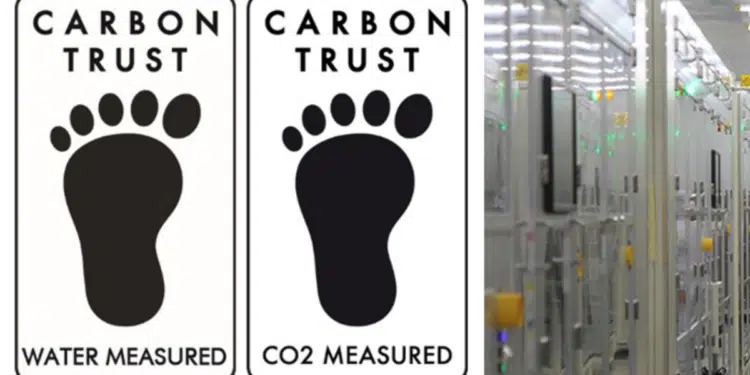Samsung Electro-Mechanics announced that it became the first in the MLCC and semiconductor package substrate industry to acquire carbon and water footprint certifications from the Carbon Trust in the United Kingdom.
The Carbon Trust, a non-profit organization established by the UK government to respond to climate change and reduce carbon emissions, recognizes companies and public organizations around the world that demonstrate leadership in reducing their environmental impact, such as carbon, water and waste footprints. “Carbon footprints” and “water footprints” are certifications awarded by calculating carbon and water emissions from pre-manufacturing to disposal of a product, officially acknowledging proactive response to climate change.
Samsung Electro-Mechanics received carbon and water footprint certifications after an evaluation of its environmental impacts, including carbon emissions and water consumption, from raw and subsidiary material processing of MLCCs and substrates to product manufacturing, passed the international standards PAS2050 and ISO14046.
Samsung Electro-Mechanics is minimizing water consumption and carbon emissions by optimizing facility operation and improving resource efficiency. In particular, it has reduced carbon emissions through process improvement activities, such as the adoption of high-efficiency energy-saving facilities and switching to sleep mode when facilities are not in operation.
Furthermore, the company has reduced water consumption by using the concentrated water generated during the manufacturing process in other facilities and made various efforts to respond to climate change, such as transparently disclosing greenhouse gas emissions from overseas plants through third-party verification.
In June, Samsung Electro-Mechanics’ MLCC and semiconductor package substrates also received carbon and water footprint certifications from the Korea Environmental Industry & Technology Institute (KEITI) under the Ministry of Environment.
“We prioritize stable profitability (Profit), the pursuit of happiness of employees (People), and fulfilling environmental responsibility (Planet),” said Kyung Kyehyun, CEO of Samsung Electro-Mechanics. “At Samsung Electro-Mechanics, we will actively respond to climate change and practice sustainable and socially responsible management.”
Samsung Electro-Mechanics has established a data-based roadmap through an ESG organization in an effort to systematically fulfill its social corporate responsibility. Samsung Electro-Mechanics’ sustainability activities have been recognized by being selected for the Dow Jones Sustainability World Index (DJSI) for 12 consecutive years, receiving the highest grade in the Carbon Disclosure Project (CDP) for 4 consecutive years, being included in the FTSE4Good Index for 10 straight years, and earning “Zero Waste To Landfill” gold validation from UL.































